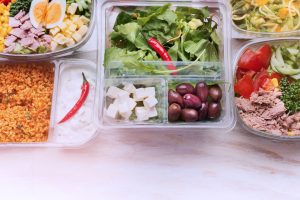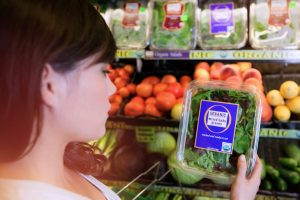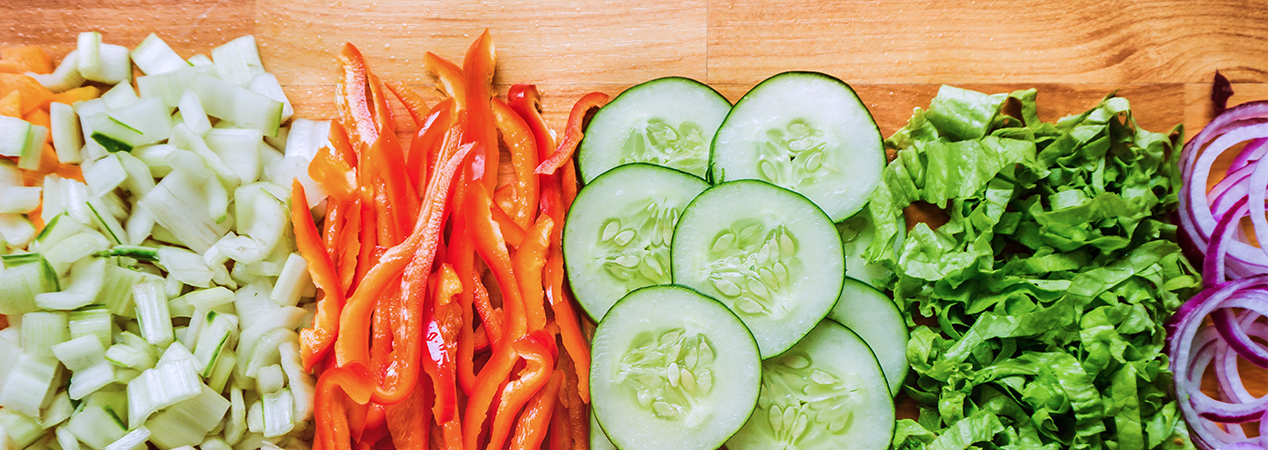In a world of “now,” convenience has become an expectation of daily life. Technology has put the entire world at our fingertips, making convenience a right, not a privilege, in the eyes of consumers.
This has changed the definition of convenience within the food industry and, consequently, food brands have evolved, creating a great deal of competition in innovation, functionality and choice. As convenience foods have become more prevalent and plentiful, it’s becoming increasingly difficult to distinguish ‘convenience’ foods from ‘regular’ food.
Consumers, however, are not just looking for ways to save time. Their needs and expectations have evolved far beyond that, and ‘compromise’ has become a dirty word. To them, some things (like quality, healthy eating and certain dietary requirements) are not worth sacrificing for the sake of convenience alone and, luckily, some brands have struck the perfect balance. Here’s a look at four things consumers don’t want to sacrifice when buying convenience food:
It’s becoming increasingly difficult to distinguish ‘convenience’ foods from ‘regular’ food.
1. Quality
No More Boring Microwave Dinners

According to Signal Theory FoodThink data, 78 percent of consumers say convenience shouldn’t mean they have to sacrifice quality.1 Consumers have a strong expectation of freshness and quality from their food, and convenience food is no exception. Luckily, gone are the days when convenience food was synonymous with nothing more than a microwaveable meal for one.
Today’s convenience food brings beautifully fresh, high-quality ingredients together with flexible packaging solutions. Hillshire Snacking is an example of a convenience item that doesn’t sacrifice on quality. Their chef-curated snacks, made with all-natural ingredients, are praised for their freshness and interesting flavor pairings. These snacks smack more of restaurant-worthy antipasti boards than they do grab-and-go lunches.
Room for dessert? Convenience and quality are perfectly blended here, too, thanks to brands such as California-based Sweetaly. Sweetaly brings indulgence – decadence even – to the time-starved with luxurious, single-serve Italian desserts. Perfect for those dessert hankerings on the go, or for when you’re just not inclined to share.
2. Health
Convenient Yet Still Nutritious
 70 percent of consumers say they are trying to eat healthier.1 Many look to convenience to make healthy food easier to buy and cook. Convenience options within fresh meat and produce have made healthy mealtimes more accessible – items that are pre-cooked, pre-marinated, pre-sliced, diced or cubed reduce the time that comes with selecting and preparing meat and produce.
70 percent of consumers say they are trying to eat healthier.1 Many look to convenience to make healthy food easier to buy and cook. Convenience options within fresh meat and produce have made healthy mealtimes more accessible – items that are pre-cooked, pre-marinated, pre-sliced, diced or cubed reduce the time that comes with selecting and preparing meat and produce.
In the branded space, Sabra is doing great things to balance convenience and health with its range of on-the-go hummus snack pots, as is Taylor Farms with its nutritionally balanced, colorful salad snack trays. Snacking products like these are particularly relevant to today’s consumers as 81 percent of Americans snack at least once a day but almost half (44 percent) say their definition of a snack has evolved.2 While past generations equated snacks to nothing more than junk food, today’s have a broader definition. Some see snacking as a key to maintaining a healthy diet, with a “little and often” approach to meals, which means that health is as important in snacking as it is at mealtimes.
3. Specialty Diets
Custom-made for Me
Paleo, keto, raw, vegetarian, vegan, organic, low-carb, high-protein, low-fat, gluten-free, non-dairy – the list of specialty diets, goes on and on. Half of North Americans say they follow a special diet*3. These diets are being well-serviced by convenience foods both in and out of the home.

Paleo diets are becoming increasingly well-catered to thanks to brands like Creation Nation whose protein bar and bite mixes are ready to make (in minutes) and claim to be “No-bake & easy as a protein shake™!” Meanwhile, on-the-go snacking brand Tribe who, like their consumers, “don’t like compromises”, offers ready-to-eat paleo bites, bars, chips and cookies.
Gluten-free diets are increasingly well catered for in the world of home baking. Cake mixes make the technical and precise process of baking accessible to those of us who were not blessed with skills in the baking department. Pillsbury’s gluten-free cake and brownie mixes mean that the luxury of convenience is not reserved for those of us lucky enough to be free of food intolerances.
Parents are looking to balance their dietary preferences for their kids with convenience also. Horizon Organic’s Good & Go range is a solely organic snack solution for kids, meaning that parents don’t have to choose between an organic diet and time – something they have even less of when kids are involved.
4. Actually Cooking
(Even Just a Little Bit)
Feeling connected to the creation of a meal remains important to many consumers – 41 percent feel guilty when they don’t cook for their family.1 This number increases to 58 percent of parents. This can create a barrier between them and convenience food if they believe that they are “cheating” too much.
Back in the 1950s, General Mills famously reformulated their Betty Crocker cake mixes4 so that consumers had to add an egg themselves (rather than just adding water to the all-powdered ingredients). Until then, consumers had rejected the product because they felt guilty for getting credit for baking they hadn’t done. For today’s consumers, the need to feel connected to one’s food remains.
Again, foods that have been pre-prepared but not necessarily pre-cooked can be a huge help to this group because the act of cooking remains with the consumer. Taylor Farms delivers here again with its stir-fry and salad kits. The kits keep consumers in control and connected to the cooking, but with a little help.
Real-world Example
Evol Foods: Convenience without Sacrifice
A fantastic example of the new world of convenience food comes from Evol Foods. Evol is redefining the aforementioned microwaveable meal for one, reminding consumers that freezing is a method specifically designed to preserve freshness, and microwaving is specifically for speed.
These methods should never mean a sacrifice of health, flavor, quality or diet. Evol’s unashamed, frozen meals boast fresh, quality, all-natural ingredients, ethically sourced and easy to cook, whether in a ‘science oven’ or beyond. The brand is reassuringly forthright about its mission to redefine frozen meals as “real food.”
Convenience food has come a long way, with brands like Evol reclaiming it from some of its less healthy predecessors. Most important, these brands are confirming to consumers that they do not need to sacrifice quality, health, diet or cooking for convenience. CPG food brands need to continue down this convenience path because one thing’s for sure – consumers won’t go back to life without it.
Visit the Signal Theory FoodThink library of free white papers for more insights into today’s oh-so-complicated consumers.
*One that limits or prohibits consumption of some foods or ingredient.
Sources
1. Signal Theory FoodThink 2016
2. Signal Theory FoodThink 2014
3. Nielsen, Global Ingredient and Out-of-Home Dining Trends Report, August 2016
4. Copyright 2013 Drew Boyd
- Fast Food
- Healthy Eating
Filed Under



